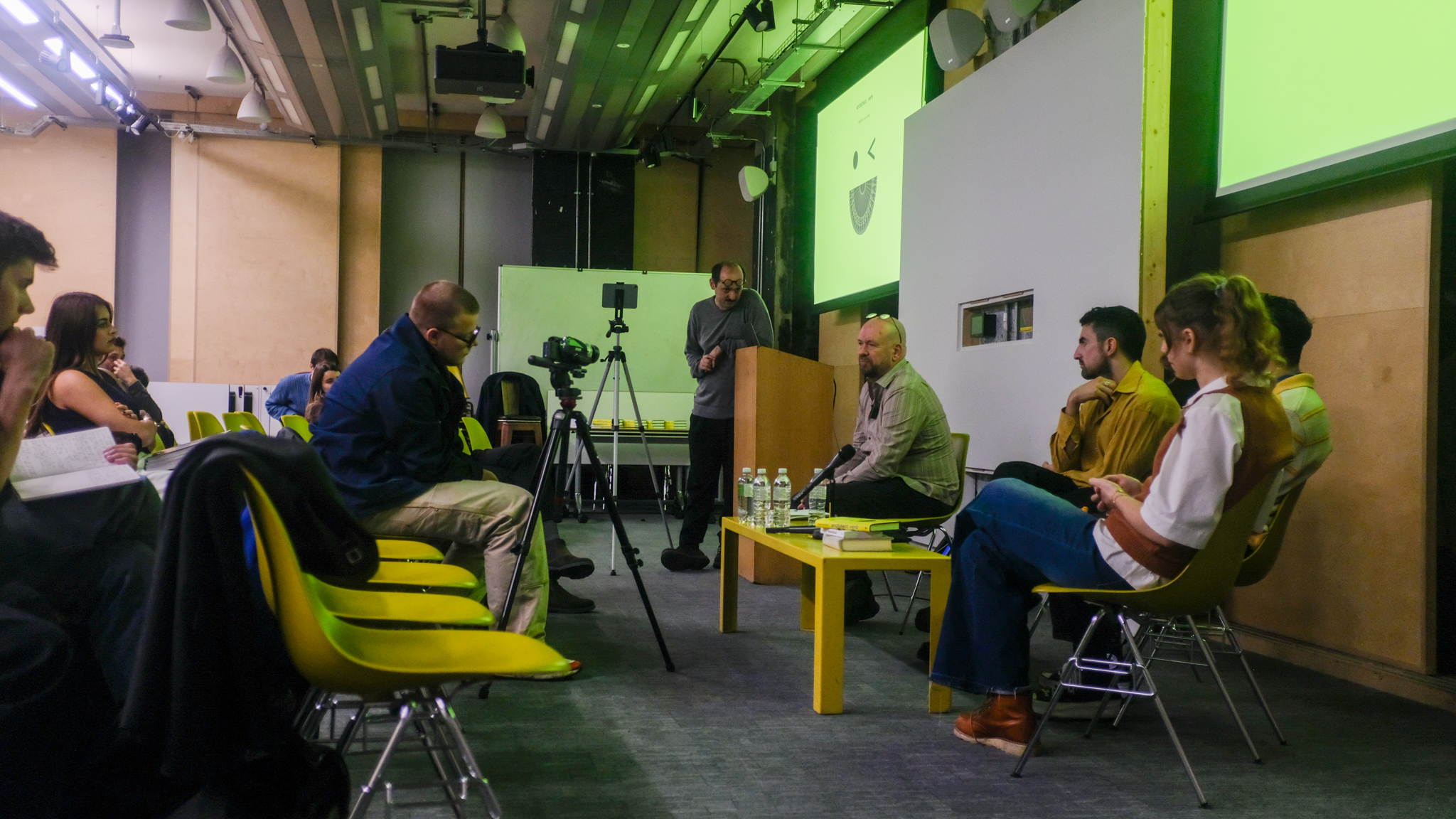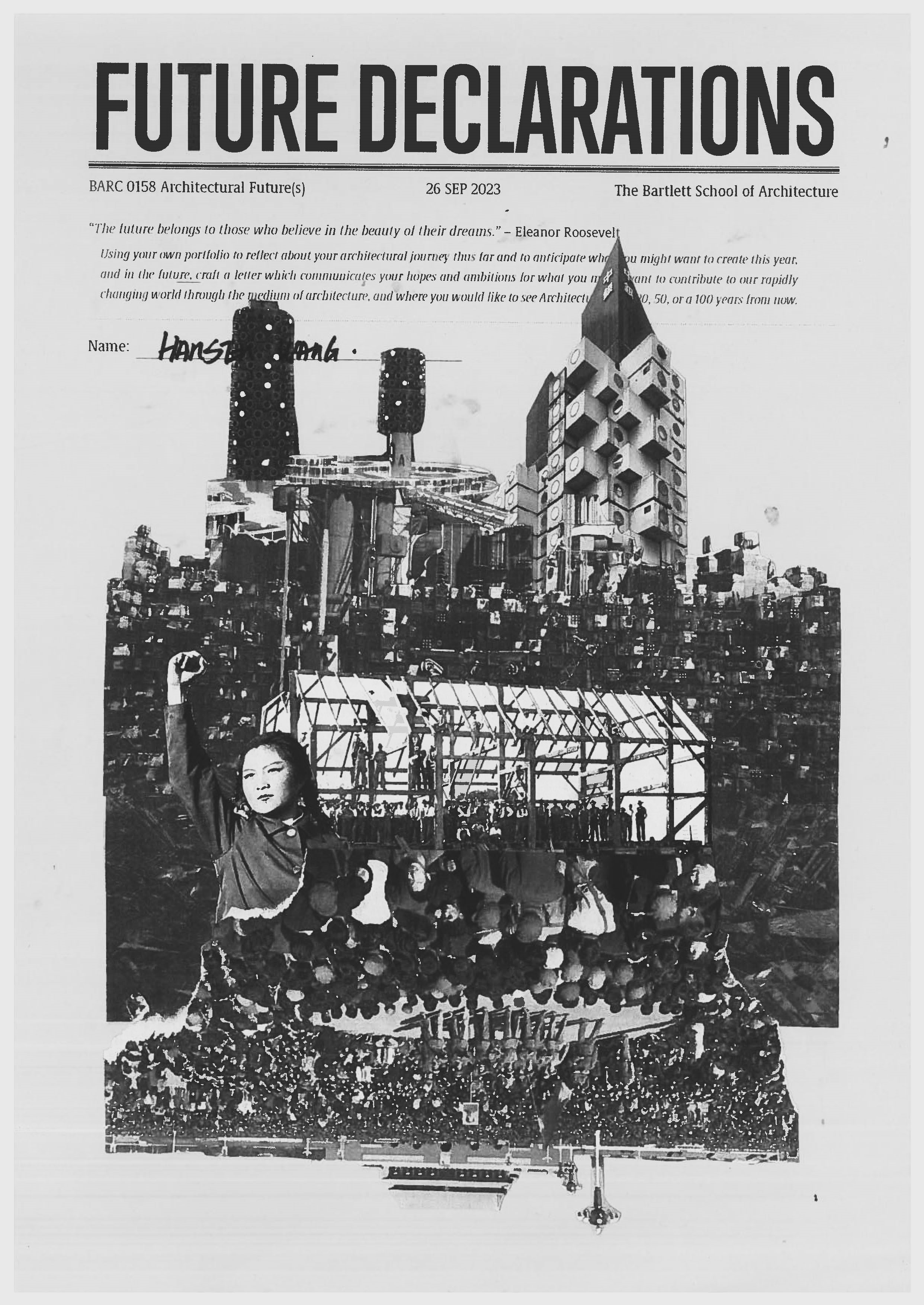‘Future(s) that are our own’
Our present was once the future and yesterday’s dream. Now, as we look forward,
what future(s) do we envision for ourselves, for others and for our planet? Faced with new and exciting innovations, on one hand, and urgent challenges, on the other, to what end(s) shall we mobilise our creative imaginaries, and by what means can we achieve them?
... is ‘dreaming’ still a task for ‘the architect’? ... is ‘dreaming’ still a task for ‘the architect’?
In the wake of WWII, Fred Polak writes in Images of the Future (1955) that without dreaming up alternative and better realities we cannot transcend the shortcomings of our present ones. Our imaginaries must then stem from a desire to improve conditions for ourselves and others; our dreams must be, like our future(s), plural, collective and participatory; they ought to encapsulate our best intentions and elevate our moral standards; they must factor in our differences and regard our histories; they should look up towards the innovative spirit of our time and discover its usefulness for improving our world and our environment, without looking down on the obstacles facing those farther away from the scope of our sight; and if we must dream of architecture, then let’s dream of buildings immersed in life, and of our future(s) that are uniquely our own.
The Bartlett School of Architecture
Module
Stream
Course
Stage
Title
Tutors
Guests
BARC0158
History & Theory
MSci
Year-4
Architectural Future(s)
Kay Sedki (Co)
Stamatis Zografos
Emily Mann
Michael Hebbert
Polly Hudson
Peg Rawes
Emily Priest
Reinier de Graaf
Jose Torero Cullen
Toby Day
Module
Stream
Course
Stage
Title
Tutors
Guests
Stream
Course
Stage
Title
Tutors
Guests
BARC0158
History & Theory
MSci
Year-4
Architectural Future(s)
Kay Sedki (Co)
Stamatis Zografos
Emily Mann
Michael Hebbert
Polly Hudson
Peg Rawes
Emily Priest
Reinier de Graaf
Jose Torero Cullen
Toby Day
History & Theory
MSci
Year-4
Architectural Future(s)
Kay Sedki (Co)
Stamatis Zografos
Emily Mann
Michael Hebbert
Polly Hudson
Peg Rawes
Emily Priest
Reinier de Graaf
Jose Torero Cullen
Toby Day
Essay Brief
![]()
![]()
Domains of Change (23-24)


Yesterday’s Future(s) / Non-Linear Histories
Urban Future(s) / Precarity and Equity
Future(s) of the Past / Heritage and Memory
Digital and Planetary Future(s)
Future Ecologies / Sustainable Future(s)
Future Architecture(s) / The Architect’s Future
Abstract Posters








“architect, verb”

Architecture is a future-oriented practice; quick to conceptualise and slow to materialise; often late – or, otherwise, too early. Actions of architecture are inherently speculative, constantly navigating a world of uncertainty and change. Today, in practice and in education, mirrors have turned towards architecture itself inviting critique and speculation about the future of architectural practice and putting to question its values and influence. These questions drive the history & theory module, Architectural Future(s), on MSci Year 4, where students and guests discuss different ‘domains of change’ impacting (or impacted by) architecture. In this public episode of Architectural Future(s), our guest, Reinier de Graaf, will share his thoughts on some of these notions with students and a wider audience. The event is organised by Architecture MSci for the cluster programmes Architecture BSc, Architecture MArch and Engineering and Architectural Design MEng andincludes a poster exhibition and a student-led discussion panel.

Reinier de Graaf (1964, Schiedam) is a Dutch architect and writer. He is a partner in the Office for Metropolitan Architecture (OMA) and the co-founder of its think-tank AMO. Reinier is the author of Four Walls and a Roof: The Complex Nature of a Simple Profession, the novel The Masterplan, and the recently published architect, verb. He lives in Amsterdam.
How to build world-class, award winning, creative, innovative, sustainable, liveable and beautiful spaces that foster a sense of place and wellbeing.
Be it sci-fi megastructures in the Middle East or historicist towns in the UK, new projects are invariably marketed with the same buzzwords: “world-class”, “award-winning”, “creative”, “innovative”, “sustainable”, “livable”, “beautiful” or fostering “a sense of place and wellbeing”. What is the significance of such terms? When does a building warrant the label “world-class”? Why is one city more “liveable” than the next? What is the meaning of “innovation” in architecture? And what building can credibly claim to improve anyone's “wellbeing”?
If De Graaf’s debut book Four Walls and a Roof was about debunking myths within the architecture profession, architect, verb aims to debunk myths projected onto architecture by the outside world – a rebuttal of doctrines which have been applied to architecture over the last twenty years. The incorporation of extraneous terms such as “livability”, “innovation” or “wellbeing” into the glossary of architecture is part of an ongoing trend in which the language to debate architecture is less and less architects' own, and more and more that of outside forces imposing outside expectations. Once a profession known for its manifestos, architecture finds itself increasingly forced to adopt ever-more extreme postures of virtue, held accountable by the world of finance, the social sciences or the medical sector.
Be it sci-fi megastructures in the Middle East or historicist towns in the UK, new projects are invariably marketed with the same buzzwords: “world-class”, “award-winning”, “creative”, “innovative”, “sustainable”, “livable”, “beautiful” or fostering “a sense of place and wellbeing”. What is the significance of such terms? When does a building warrant the label “world-class”? Why is one city more “liveable” than the next? What is the meaning of “innovation” in architecture? And what building can credibly claim to improve anyone's “wellbeing”?
If De Graaf’s debut book Four Walls and a Roof was about debunking myths within the architecture profession, architect, verb aims to debunk myths projected onto architecture by the outside world – a rebuttal of doctrines which have been applied to architecture over the last twenty years. The incorporation of extraneous terms such as “livability”, “innovation” or “wellbeing” into the glossary of architecture is part of an ongoing trend in which the language to debate architecture is less and less architects' own, and more and more that of outside forces imposing outside expectations. Once a profession known for its manifestos, architecture finds itself increasingly forced to adopt ever-more extreme postures of virtue, held accountable by the world of finance, the social sciences or the medical sector.








“architect, verb” lecture and panel discussion with Reinier de Graaf (OMA/AMO) at the Bartlett School of Architecture, 22 Gordon Street, G12 on Nov 23, 2023
Yesterday’s Futures /
Non-Linear Histories
![]()
![]()
![]()
![]()
![]()
![]()
![]()
![]()
![]()
![]()
![]()
![]()
![]()
![]()
![]()
![]()
















E-mail Kay

